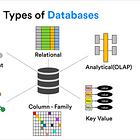Master Data Management Framework Simplified( With or Without AI)
What’s the definition of Master Data Management (MDM)?
Master Data Management (MDM) is a comprehensive approach to managing and ensuring the quality, consistency, and governance of an organization's critical data assets, often referred to as master data. Master data typically represents the core business entities that are shared across various departments and systems within an organization
Now, let’s simplify the definition:
Master Data Management (MDM) is like being the boss of all the important information in a big company. It's about making sure that all the important stuff, like customer names, product details, and employee information, is accurate, consistent, and well-organized. This helps everyone in the company work together better and make smart decisions based on the right information.
Why MDM is important?
For any enterprise organization, Mastering Data Management(MDM) is not just an option; it's a necessity. Master Data Management plays a crucial role in supporting and enhancing Artificial Intelligence initiatives by providing high-quality data, facilitating data integration and governance, and enabling continuous improvement through monitoring and feedback mechanisms.
By leveraging MDM capabilities, organizations can maximize the value of their AI investments and drive innovation in various domains.
Now let’s talk about MDM framework
MDM framework includes:
1) Data Modelling
Building a solid foundation starts with meticulous data modeling. It involves designing data structures that align with business objectives, ensuring data accuracy and relevance.
2) Data Integration
Seamlessly integrating data from disparate sources is crucial for holistic insights. An efficient MDM framework facilitates smooth data integration, breaking down silos and fostering collaboration across departments.
3) Data Quality
Garbage in, garbage out—data quality is non-negotiable. MDM ensures data consistency, completeness, and accuracy through robust quality management practices.
4) Data Catalog
Think of it as a library catalog for your data assets. A comprehensive data catalog enables easy discovery, retrieval, and understanding of available data, empowering users to make informed decisions.
5)Data Security
Safeguarding sensitive information is paramount. MDM incorporates robust security measures to protect data integrity and confidentiality, mitigating risks of breaches and unauthorized access.
6) User Interface
User-friendly interfaces enhance accessibility and usability. An intuitive MDM interface empowers users to interact with data effortlessly, fostering productivity and efficiency. This goes for both API and UI.
7) Data Monitoring and Analytics
Continuous monitoring is essential to track data health and performance. MDM provides real-time insights and analytics, enabling proactive decision-making and course correction.
8) Data Governance and Compliance
Adhering to regulatory standards and internal policies is imperative. MDM establishes clear governance frameworks, ensuring compliance and accountability at every stage of the data lifecycle.
Each component of MDM framework plays a vital role in optimizing data management processes and helps enterprises unlock the full potential of Data.
Please feel free to also read my previous blog post.






